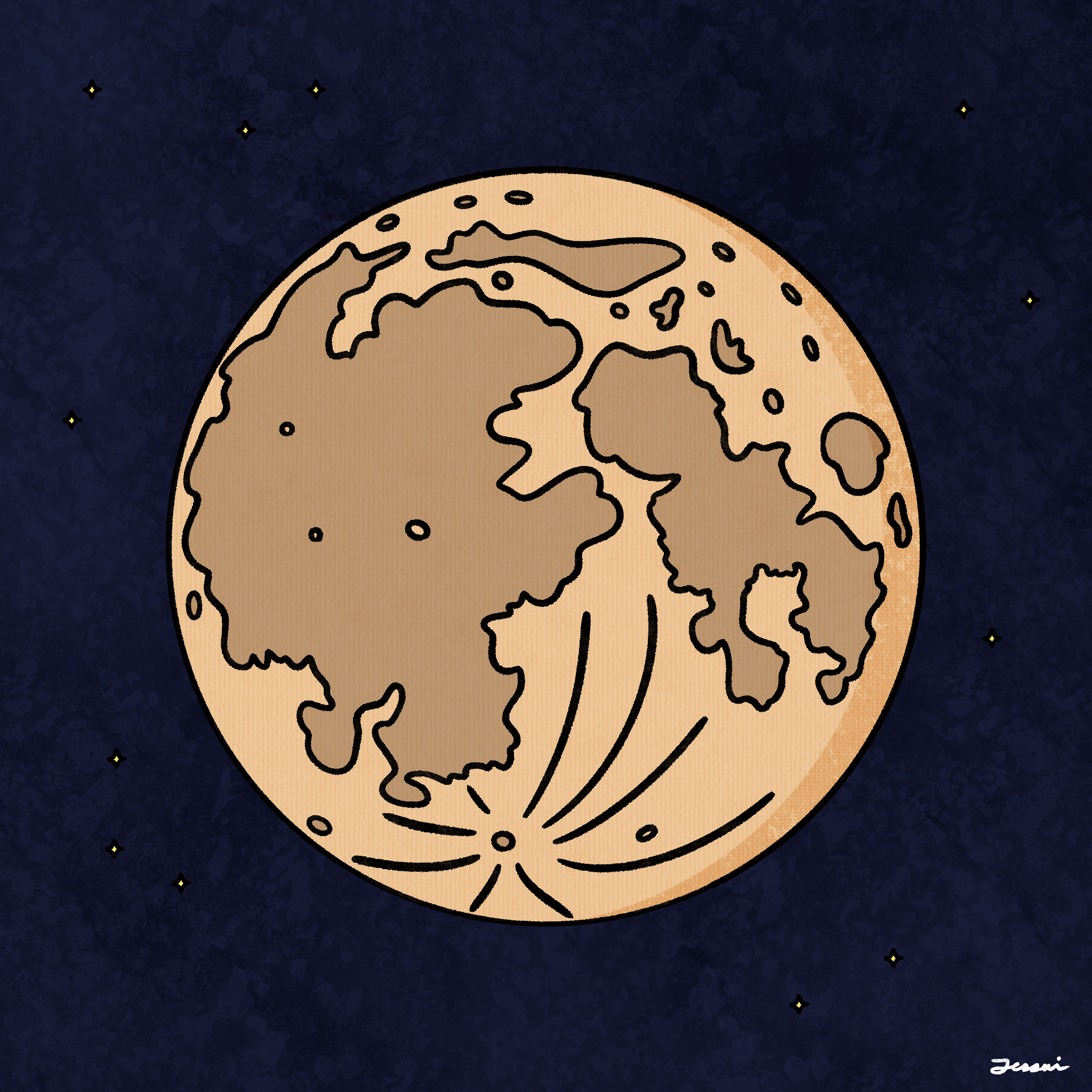NASA’s Artemis I mission launches to go to the moon
Artemis I is the first in a series of missions to bring humans back to the moon, and eventually to Mars.

Jessai Flores, Illustration Editor
Early morning on Nov. 16, NASA launched its latest rocket from the Kennedy Space Center in Florida. Artemis I marks NASA’s first mission to land humans on the moon since Apollo 17 in 1972.
With a variety of scientists and experts housed on Yale’s campus, the Artemis missions are being seen on campus as progress, not only scientifically but also socially, with NASA planning to land the first person of color and the first woman on the moon. In addition to exploring the lunar surface, NASA hopes to establish a long-term base on the moon to use as a stepping stone for their next target: landing humans on Mars.
“The Artemis’ goal of putting people back on the moon would enable science, which has been limited since the Apollo program ended,” Juan Lora, an assistant professor of Earth and planetary sciences at Yale, said.
The research conducted on Artemis missions could include an expansion of lunar seismology and the collection of new lunar samples for analysis on Earth, according to Lora. These discoveries would have implications for our understanding of the structure and geochemistry of the moon, and by implication, its connection to Earth, he said.
Returning to the moon may also lead to a better understanding of our solar system as a whole. According to Adriane Steinacker, senior lecturer in physics at Yale and former scientist at the NASA Ames Research Center, it is possible that there are rocks on the moon that were initially dislodged from Venus, as outlined by Yale Astronomy graduate student Samuel Cabot.
“Finding even just one of these rocks could tell us an enormous amount about Venus, and in particular, could pin down when it experienced the catastrophic greenhouse warming that turned it into the awful place that it is today,” Steinacker said.
With Artemis I, NASA is testing the Space Launch System that sends not only the rocket into space but also the Orion spacecraft, which will orbit the moon for just under a week before returning back to the Earth.
Artemis II will be a crewed mission repeating a similar procedure, ensuring that the spacecraft is capable of hosting humans while traveling to the moon.
Finally, Artemis III and future Artemis missions will bring crews to the moon, eventually establishing the Artemis Base Camp, as well as the Lunar Gateway which is the spaceship that will be in lunar orbit for crews to transfer between Orion and the lunar lander.
According to Steinacker, Artemis I is only slightly more physically powerful than the rockets of the 1960s. In fact, the new SLS rocket that launches Artemis I is only about 17 percent more powerful than the Saturn V rocket used in the Apollo program. Rather, Artemis I is distinct from its predecessors in other ways.
“The biggest difference lies in computerization,” says Steinacker. “The instrumentation and flight control systems in the new spacecraft are enormously more capable than their counterparts from the first space race.”
The Space Launch System that sends Artemis I into space is currently the most powerful rocket in the world, according to NASA. SLS consists of two stages to provide the necessary thrust for Artemis I to overcome Earth’s gravity.
The first stage has two main parts, according to Strathcona Professor of Mechanical Engineering & Materials Science & Applied Physics Mitchell Smooke. The first consists of two solid rocket boosters, delivering approximately 5.6 million pounds of thrust — compared to an average commercial plane’s tens of thousands of pounds. The second consists of four engines that burn liquid hydrogen and liquid oxygen. According to NASA, SLS burns 735,000 gallons of propellant in eight minutes before being dropped off the rocket to eliminate the now-unnecessary weight.
Afterwards, with Artemis I in a circular orbit around the Earth, another stage of SLS is fired to accelerate Artemis I to over 22,600 miles an hour, allowing it to overcome the Earth’s gravity and begin a trajectory towards the moon, nearly 240,000 miles away.
In 2020, NASA, in collaboration with the U.S. Department of State and the National Space Council, created the Artemis Accords, an international agreement for peaceful and cooperative space exploration. As of now, 21 countries and one territory have signed the accords, including the United States, Japan, France and Australia, among others. The Artemis Accords partners also agree to release scientific data publicly in order to promote scientific collaboration and innovation.
While there is no longer any NASA-funded research at Yale that focuses on the Artemis propulsion system, there is research that considered electrospray propulsion, which could be used for thrusters.







